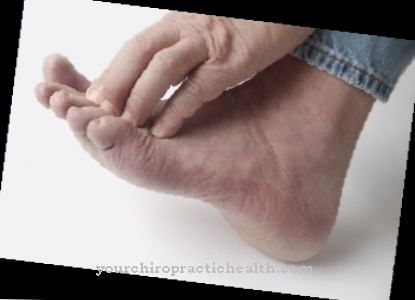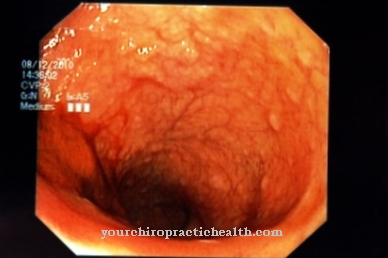The Child and adolescent psychiatry and psychotherapy deals with the diagnosis, therapy and prevention of mental illnesses and behavior disorders in children and adolescents. With the help of medical and psychological procedures, the mental health of the patients is to be established and maintained.
What is child and adolescent psychiatry and psychotherapy?

Child and adolescent psychiatry and psychotherapy is an independent medical specialty. It deals with the research, diagnosis and therapy of mental illnesses and social abnormalities in adolescents. The prevention of mental illness is also one of their core tasks.
In order to achieve these goals, knowledge from medicine, biology and psychology is used in child and adolescent psychiatry and psychotherapeutic practice. These are used for the treatment of psychological, psychosomatic and neurological diseases, for intervention in the event of abnormal social behavior and for rehabilitation in the case of addictions.
Boys and girls as well as adolescents up to the age of 18 are considered children and young people. In exceptional cases, child and adolescent psychiatrists and psychotherapists can also treat older adolescents. They have either completed a medical degree with further training in a child and adolescent psychiatric clinic or a degree in psychology or pedagogy and subsequent training. Accordingly, a distinction must be made between treatment by a doctor and by a psychotherapist.
Treatments & therapies
Diagnostics in child and adolescent psychiatry and psychotherapy are based on two international manuals. These are catalogs of known clinical pictures that contain a classification, definition and brief description of these diseases. These are the ICD (English abbreviation for "International Statistical Classification of Diseases and Related Health Problems") and the DSM (English abbreviation for "Diagnostic and Statistical Guide to Mental Disorders"). As extensive as they are in the field of mental illnesses in children and adolescents, the range of treatments in this field is just as diverse.
This spectrum initially includes impaired intelligence and states of dementia, which can already occur in children and adolescents. These can be related to developmental disorders such as reading and spelling disorders as well as arithmetic disorders, while conversely, dyslexia or dyscalculia cannot be inferred from decreased intelligence. Motor disorders can also have psychological or psychiatric causes.
In the field of hyperkinetic disorders, particular mention should be made of the attention deficit syndrome (ADHD), which is controversial among scientists, which was diagnosed in over 600,000 children and adolescents in Germany in 2011 and is mostly treated pharmacologically.
Tics can also occur in childhood and adolescence, as can typical behavioral problems that can be associated with self-harming behavior. Child and youth psychiatrists and psychotherapists work with speech therapists and speech therapists in the event of impaired speech behavior.
Further illnesses are autism and other perception and communication disorders. Schizophrenia can also occur in childhood and needs psychiatric and psychotherapeutic treatment. In addition to depression, affective disorders include manic and bipolar disorders. Personality disorders and disorders of social and sexual behavior can be just as serious.
Anxiety and obsessive-compulsive disorders as well as stress disorders can occur in childhood and adolescence. These can, but do not have to be, associated with traumatic experiences. Finding out its cause and correcting it is also one of the tasks of psychiatrists and psychotherapists who specialize in this age group. Another problem that practitioners are often faced with is eating disorders such as anorexia and bulimia, but also obesity. Addictions are also common at this age.
You can find your medication here
➔ Medicines to calm down and strengthen nervesDiagnosis & examination methods
Child and adolescent psychiatry and psychotherapy is interdisciplinary. This means that here scientific knowledge from different areas flows together, different diagnostic and therapeutic approaches exist side by side, complement each other and can compete with each other. The basis of diagnostics in the field of child and adolescent psychiatry and psychotherapy are the anamnesis, medical examinations and psychological test procedures.
The anamnesis is the history of the disease. Since children and adolescents are often unable to describe them, the caregivers play a crucial role. In the course of the anamnesis, not only the reason for the examination is determined, the doctor or psychologist also formulates the question for the further examination steps, which are decisive for the selection of the medical and psychological test procedures. The medical examination can use different procedures, depending on the course of the anamnesis discussion. The physical examination by the doctor and the determination of the patient's laboratory values is only the first step; imaging methods such as computed tomography and functional magnetic resonance tomography can also be used.
Once a diagnosis has been made, child and adolescent psychiatrists and psychotherapists have various test procedures and therapies at their disposal, such as drug treatment, depth psychology or behavioral therapy. Treatment with psychotropic drugs can only be carried out by a doctor. Drugs from the group of stimulants, antidepressants and neuroleptics are often used. Pharmacotherapy is rarely the only measure; it is supplemented by conversation-based and behavioral procedures.
In addition, systemic-family-related approaches are of great importance in this area. The focus is not only on the affected child or young person. Rather, his behavior is considered within the family constellation, in the school and private context. The therapy of children and adolescents can be carried out as an inpatient, in specialized psychiatric clinics, or on an outpatient basis. The legal basis for the work of child and youth psychiatrists and psychotherapists is stipulated by law in the Child and Youth Welfare Act (KJHG) and the Mentally Ill Act (PsychKG).
























.jpg)



